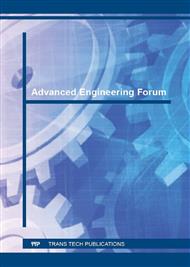[1]
Ammar A Al-Rousan. Reduction of fuel consumption in gasoline engines by introducing HHO gas into intake manifold. Intern J Hydrogen Energy (2010); 35: 12930-5.
DOI: 10.1016/j.ijhydene.2010.08.144
Google Scholar
[2]
Santilli, R.M., A New Gaseous and Combustible form of Eater, International Journal of Hydrogen Energy, 31, (2006) 1113-1128.
DOI: 10.1016/j.ijhydene.2005.11.006
Google Scholar
[3]
Arat, Hüseyin Turan, et al. Effect of using Hydroxy–CNG fuel mixtures in a non-modified diesel engine by substitution of diesel fuel., International Journal of Hydrogen Energy 41. 19 (2016): 8354-8363.
DOI: 10.1016/j.ijhydene.2015.11.183
Google Scholar
[4]
Yilmaz, A. C., Uludamar, E., & Aydin, K. (2010). Effect of hydroxy (HHO) gas addition on performance and exhaust emissions in compression ignition engines. international journal of hydrogen energy, 35(20), 11366-11372.
DOI: 10.1016/j.ijhydene.2010.07.040
Google Scholar
[5]
Zammit G, Farrugia M, Ghirlando R. Experimental investigation of the effects of hydrogen enhanced combustion in SI and CI engines on performance and emissions. HEFAT (2012): 641-50.
Google Scholar
[6]
Zamfirescu, C., & Dincer, I. Ammonia as a green fuel and hydrogen source for vehicular applications. Fuel processing technology, 90(5), (2009). 729-737.
DOI: 10.1016/j.fuproc.2009.02.004
Google Scholar
[7]
Paykani, A., Kakaee, A. H., Rahnama, P., & Reitz, R. D. Effects of diesel injection strategy on natural gas/diesel reactivity controlled compression ignition combustion. Energy, 90, (2015) 814-826.
DOI: 10.1016/j.energy.2015.07.112
Google Scholar
[8]
Korakianitis T, Namasivayam AM, Crookes RJ. Natural-gas fueled spark ignition (SI) and compression-ignition (CI) engine performance and emissions. Prog Energy Combust Sci (2011); 37(1): 89-112.
DOI: 10.1016/j.pecs.2010.04.002
Google Scholar
[9]
Paykani A, Khoshbakhti Saray R, Shervani-Tabar MT, Mohammadi-Kousha A. Effect of exhaust gas recirculation and intake pre-heating on performance and emission characteristics of dual fuel engines at part loads. J Central South Univ (2012).
DOI: 10.1007/s11771-012-1148-5
Google Scholar
[10]
Kakaee AH, Paykani A. Research and development of natural gas fueled engines in Iran. enew Sustain Energy Rev (2013); 26: 805-21.
DOI: 10.1016/j.rser.2013.05.048
Google Scholar
[11]
Bakar, R. A., Kadirgama, K., Sharma, K. V., Rahman, M. M., & Semin. Application of Natural Gas for Internal Combustion Engines. INTECH Open Access Publisher. (2012).
Google Scholar
[12]
Baltacioglu K. B.,. Hydroxy (HHO) and Hydrogen (H2) Enriched Compressed Natural Gas (CNG) Usage In Biodiesel Fuelled Compression Ignition (CI) Engines. Unpublished PhD thesis, Cukurova University, Adana (2016) 73-110.
Google Scholar
[13]
AVL BOOST User Guide VERSION 2013. 2.
Google Scholar
[14]
AVL BOOST Theory VERSION 2013. 2.
Google Scholar
[15]
White, C. M., Steeper, R. R., & Lutz, A. E. The hydrogen-fueled internal combustion engine: a technical review. International journal of hydrogen energy, 31(10), (2006) 1292-1305.
DOI: 10.1016/j.ijhydene.2005.12.001
Google Scholar


